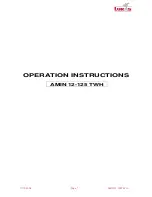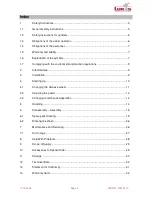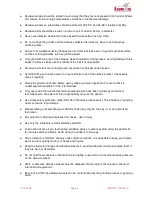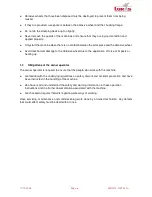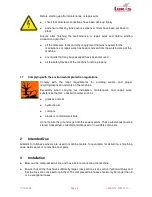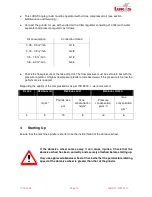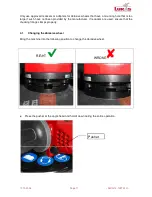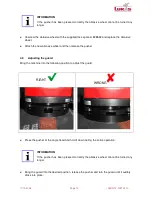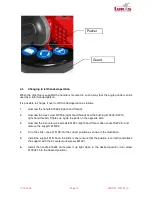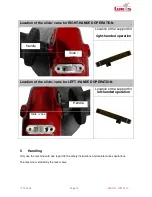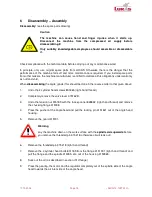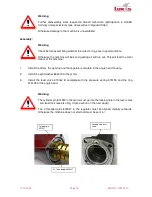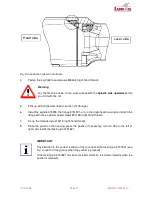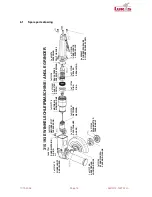
17.10.2008
Page 5
• AMIN 12-125T WH •
●
Abrasive wheels should be stored in such a way that they are not exposed to the harmful effects
of moisture, frost and large temperature variations or mechanical damage.
●
Abrasive wheels on substrates should be stored at 18-22°C and 45-65% relative humidity.
●
Abrasive belts should be stored on a rod or hook of at least 50 mm in diameter.
●
Never use abrasive wheels that have passed their specified "use by" date.
●
Do not change the grinder and the abrasive wheels after delivery. Never use force when
attaching them.
●
Ensure that suitable chucking flanges are used and that these are in a good mechanical state
and free of foreign bodies such as grinding swarf.
●
Only grind with the area of the abrasive wheel intended for that purpose. Avoid grinding with the
edges of abrasive belts, use the middle of the belt if at all possible.
●
Abrasive belts that are not being used should be not be kept under tension.
●
Avoid blocking and uneven wear to ensure efficient use of the abrasive wheel. If necessary,
dress it regularly.
●
Check the grinder each time before use by making a visual inspection to ensure that it is
undamaged and suitable for the intended task.
●
Only users with the relevant technical knowledge who have been trained by authorised
technicians who are aware of their responsibility may use the grinder.
●
Use a respiratory protection mask (EN 149) if the work produces dust. The inhalation of grinding
dust can lead to lung damage.
●
Disassembling or assembling our LUKAS grinder may only be done by us or an authorized
technician.
●
Pay attention to flailing compressed air hoses - risk of injury.
●
Use only the lubricants recommended by LUKAS.
●
Take action at once if you feel tingling, stabbing pains or numbness after using the grinder for
ten minutes without a break. Avoid using the grinder continuously.
●
Since vibration is felt more strongly under colder conditions, it is advisable to keep your hands
warm and to regularly move your hands and fingers.
●
Keep the fastening flanges and abrasive wheels in good mechanical order and replace them if
they are worn or deformed.
●
Do not hold the work piece or the machine too tightly in use and do not exert excessive pressure
on the abrasive wheel.
●
Worn or defective abrasive wheels must be disposed of according to the relevant national or
international regulations.
●
Bear in mind that the abrasive wheels can be contaminated by the grinding process or grinding
swarf.

